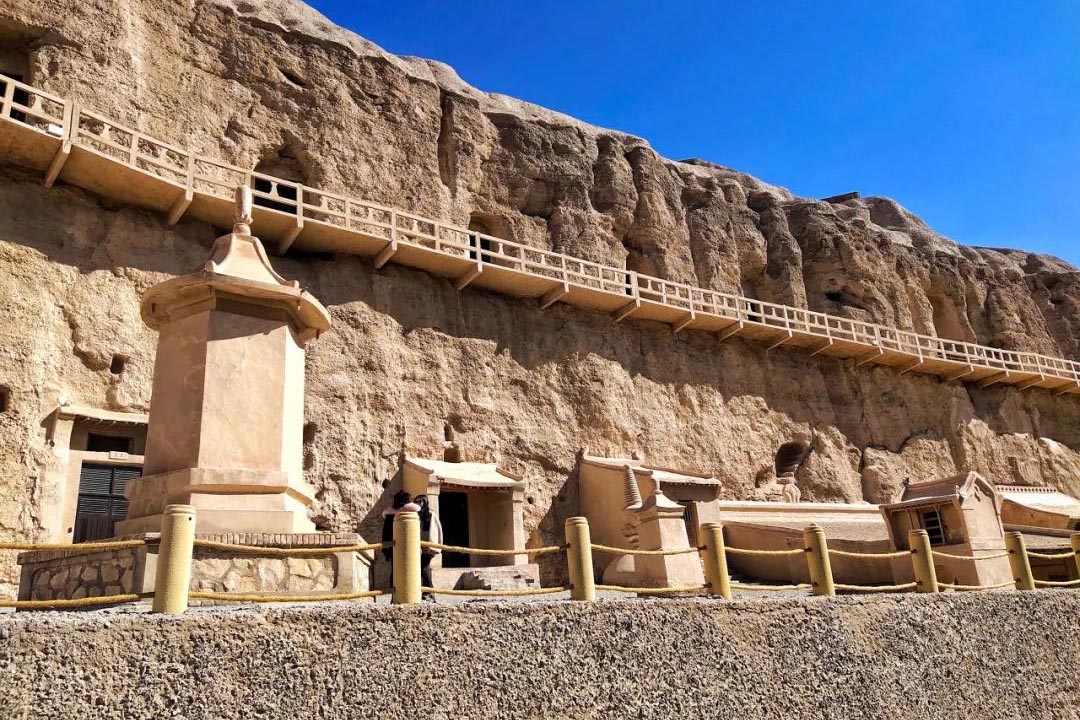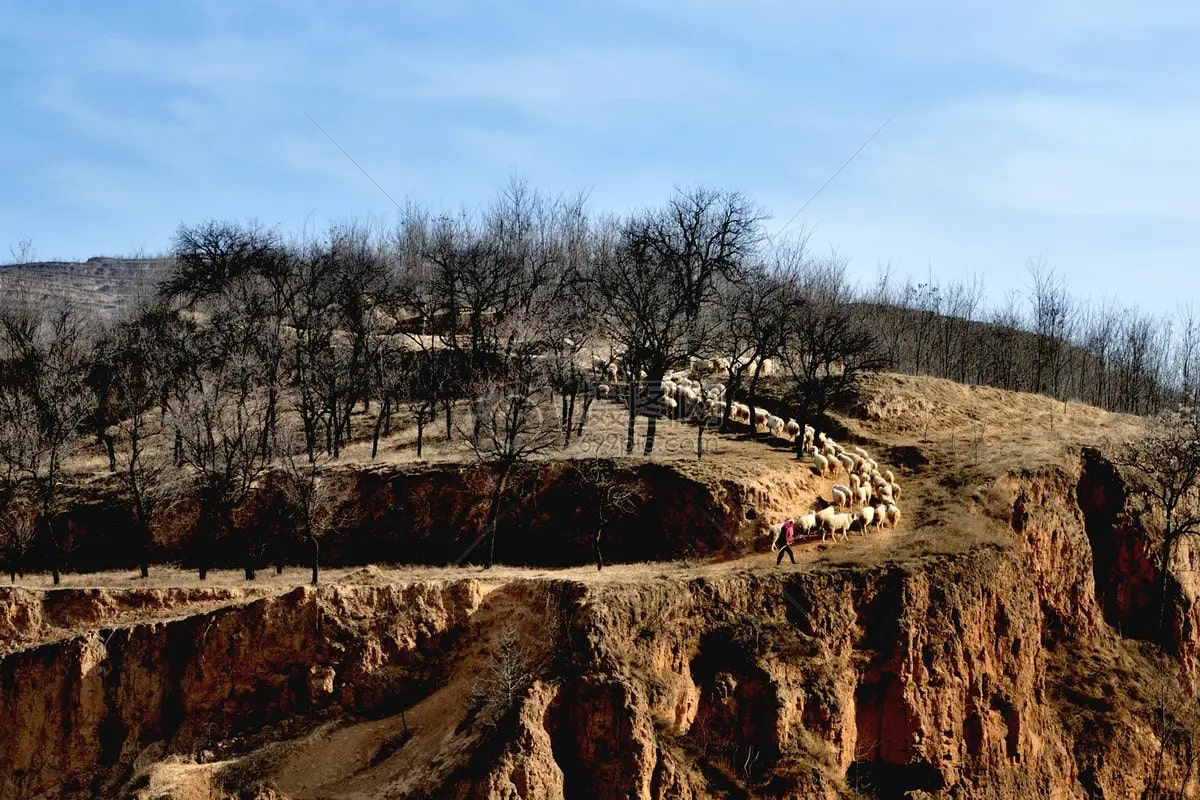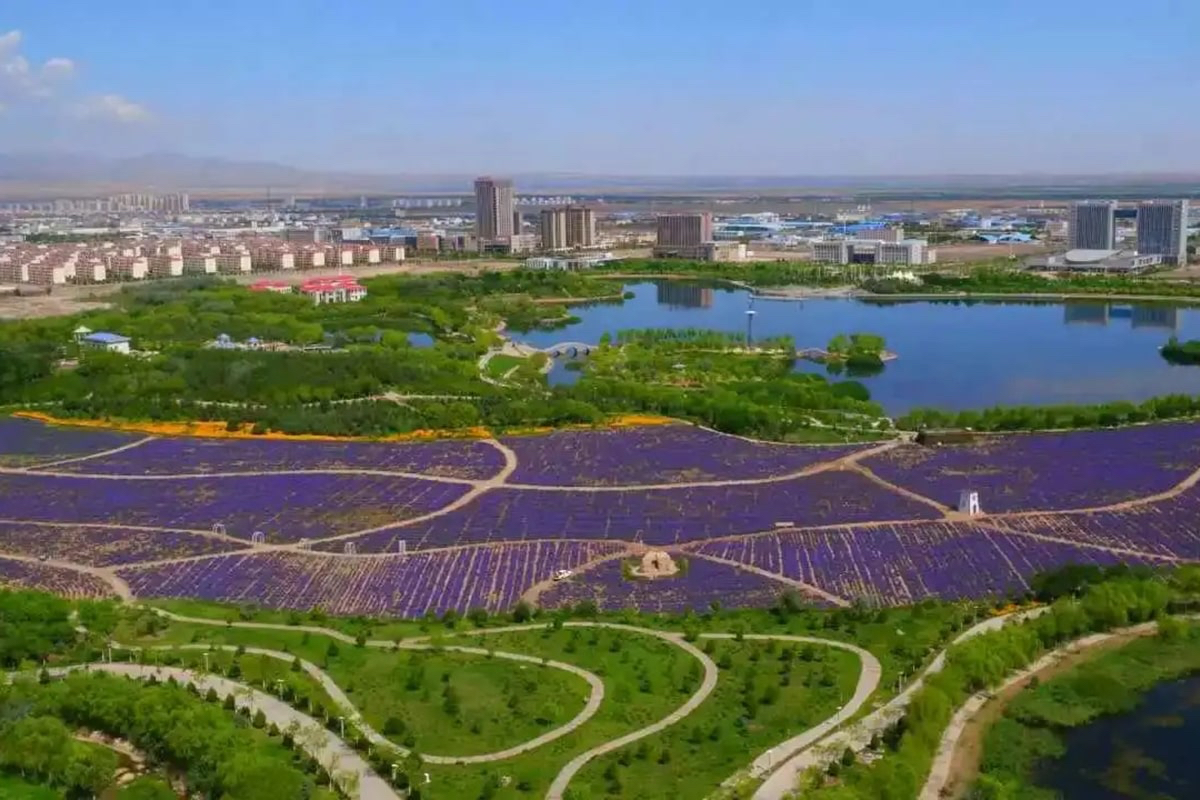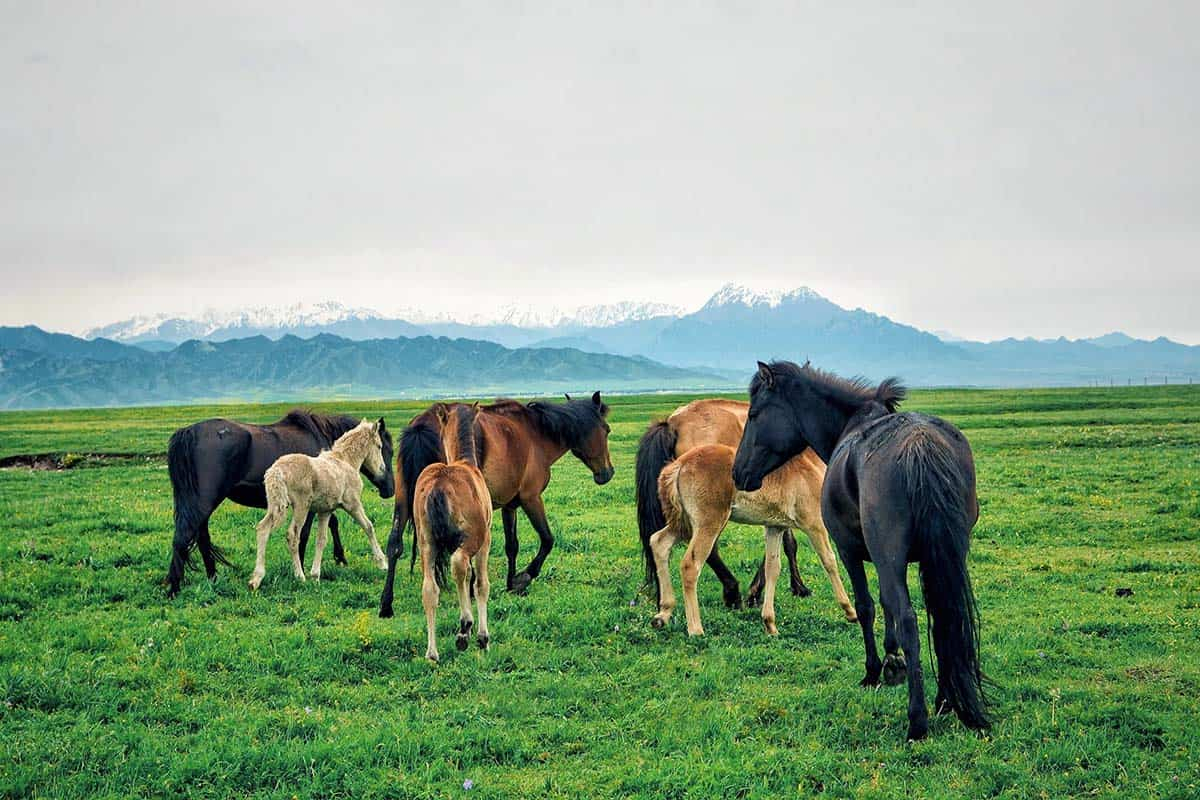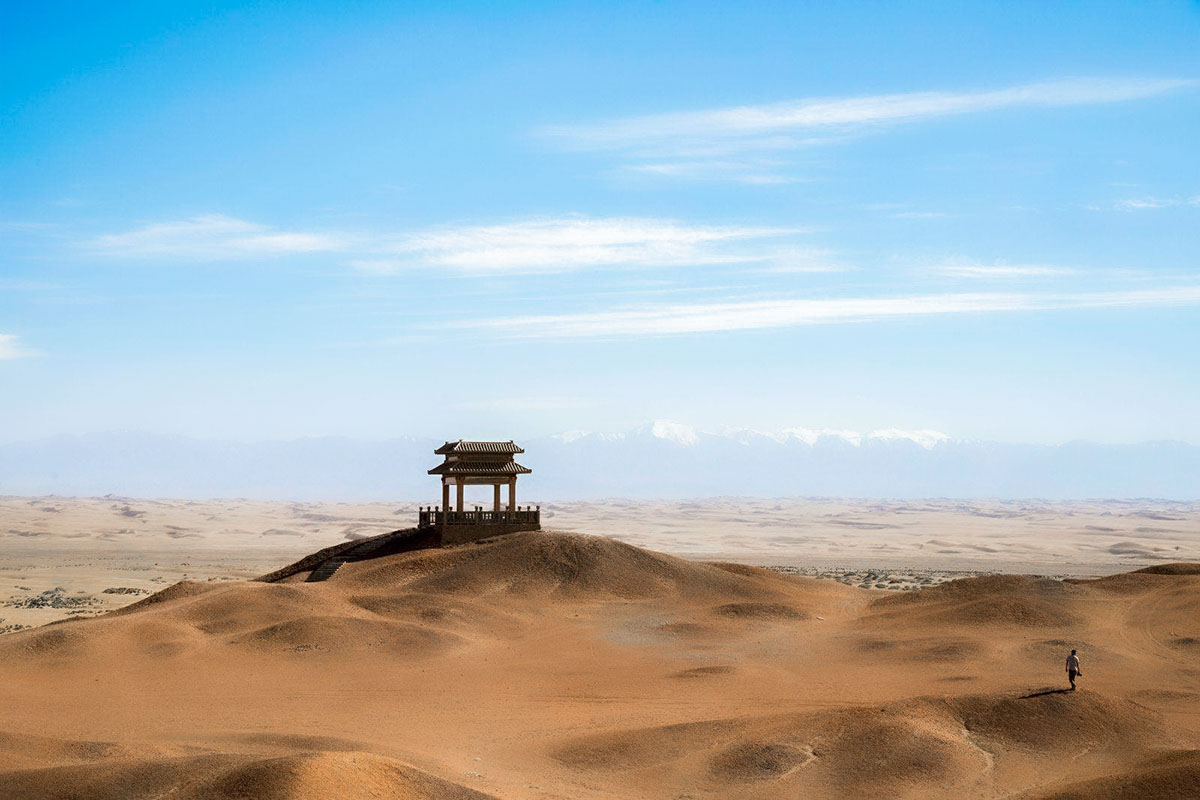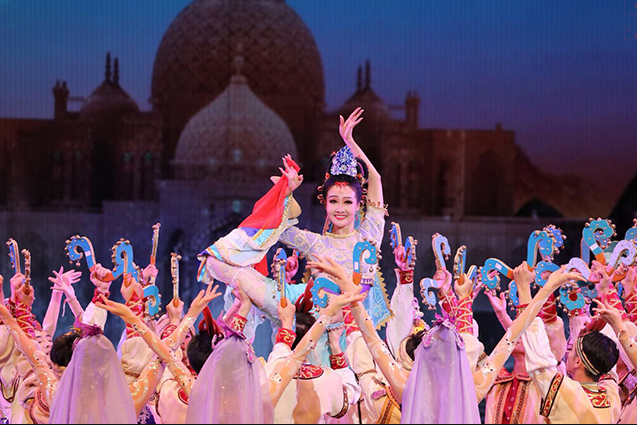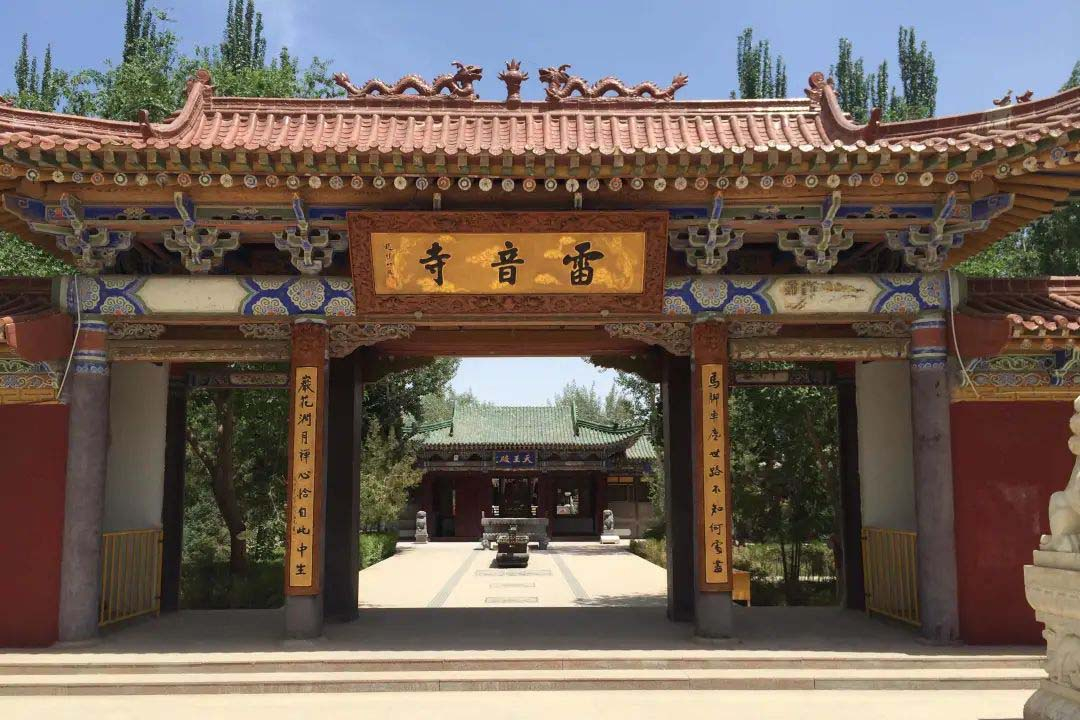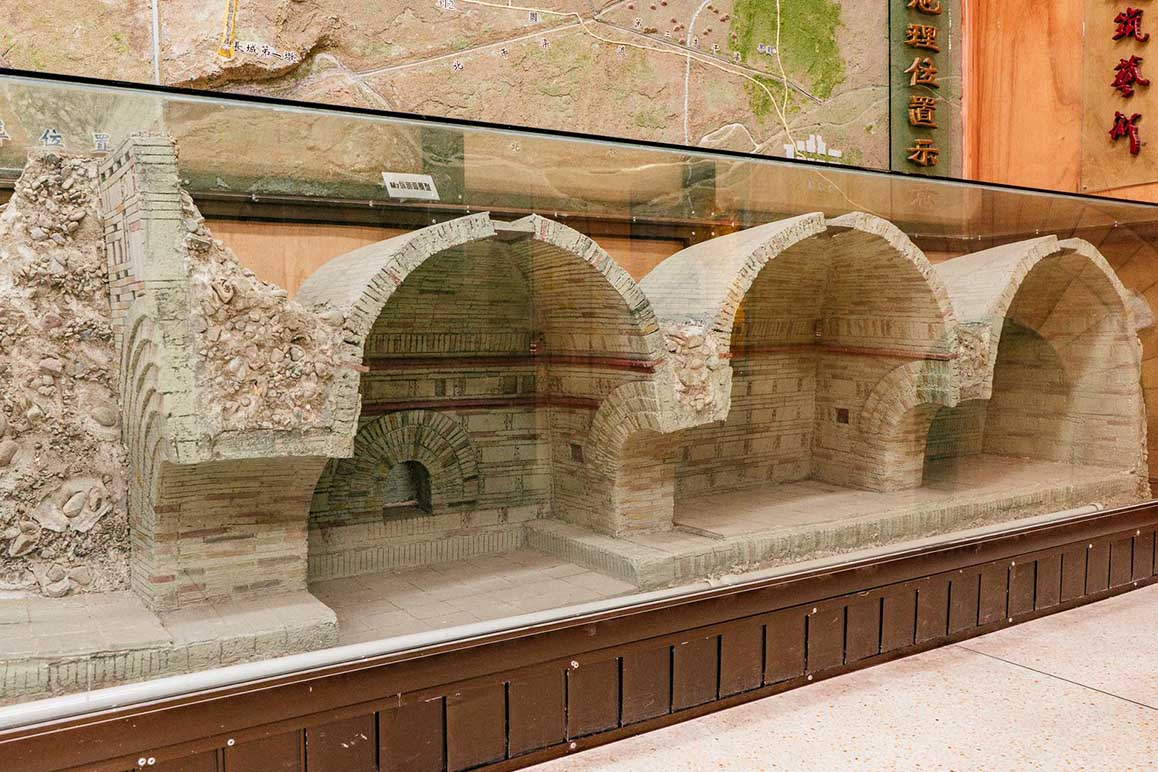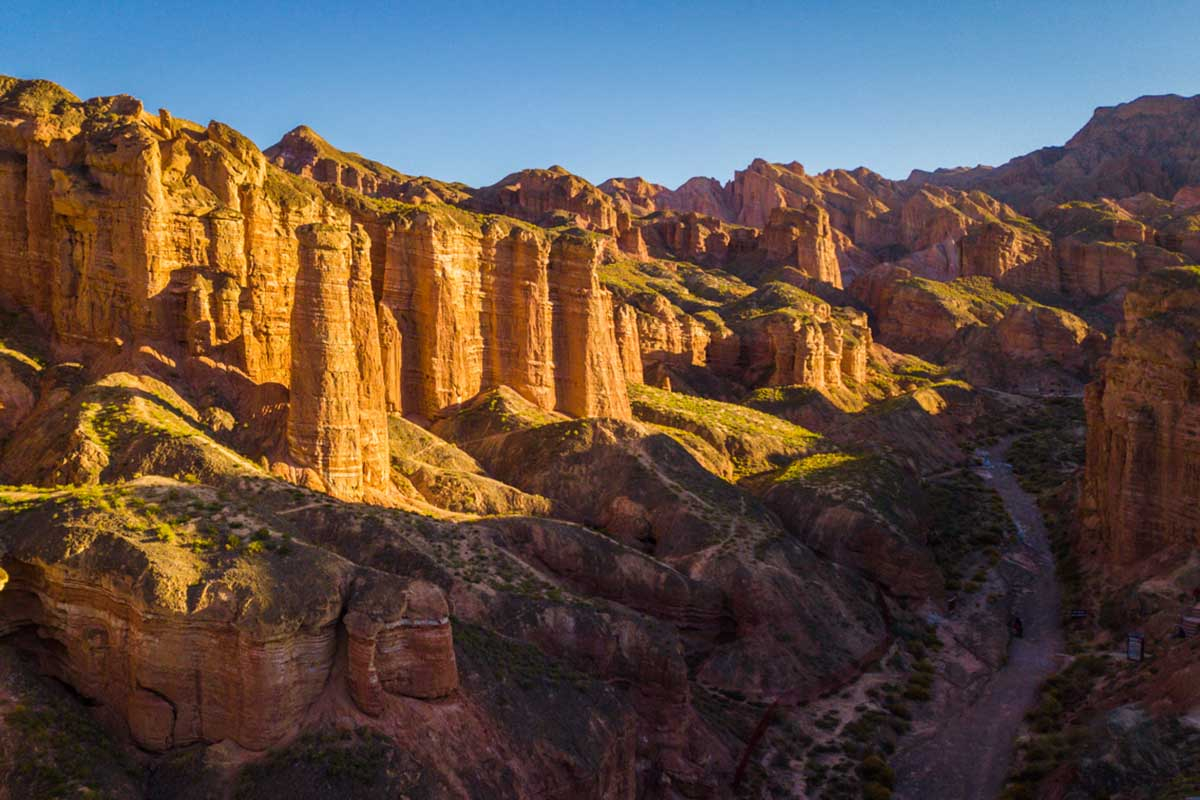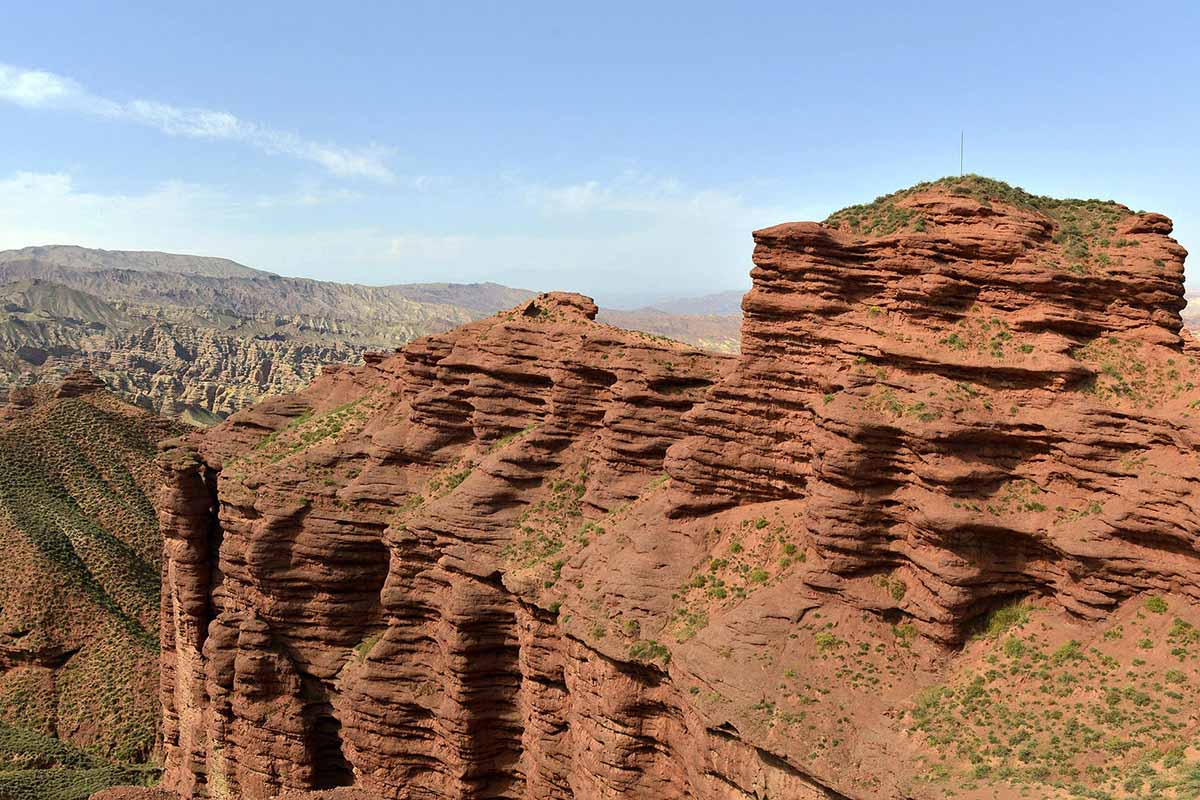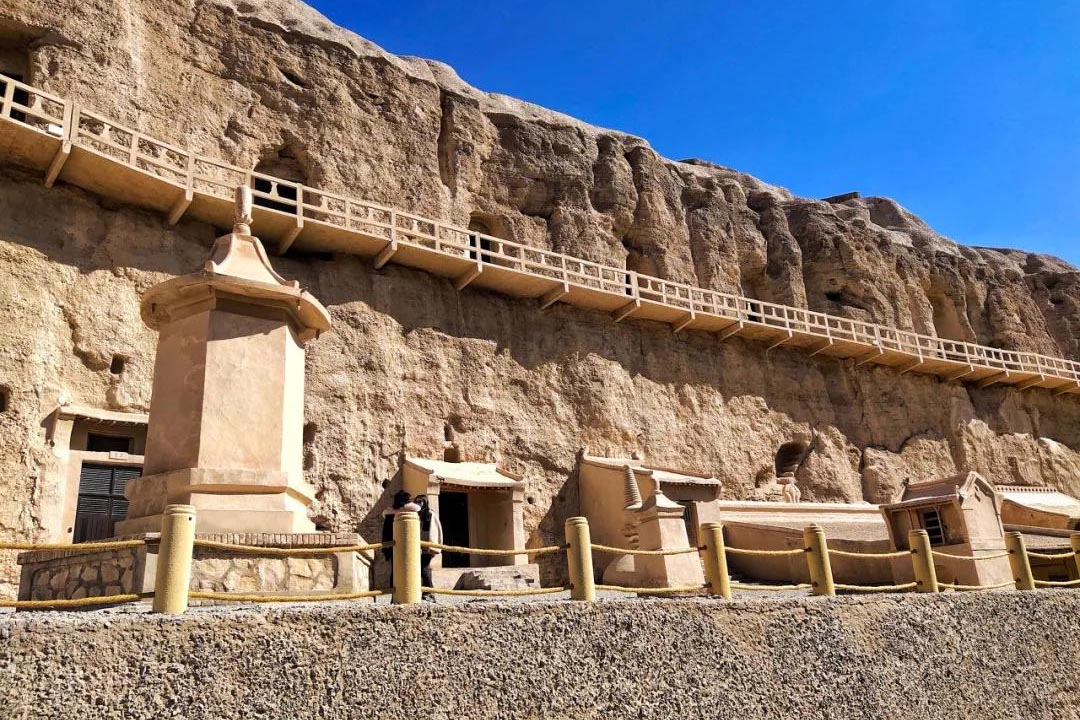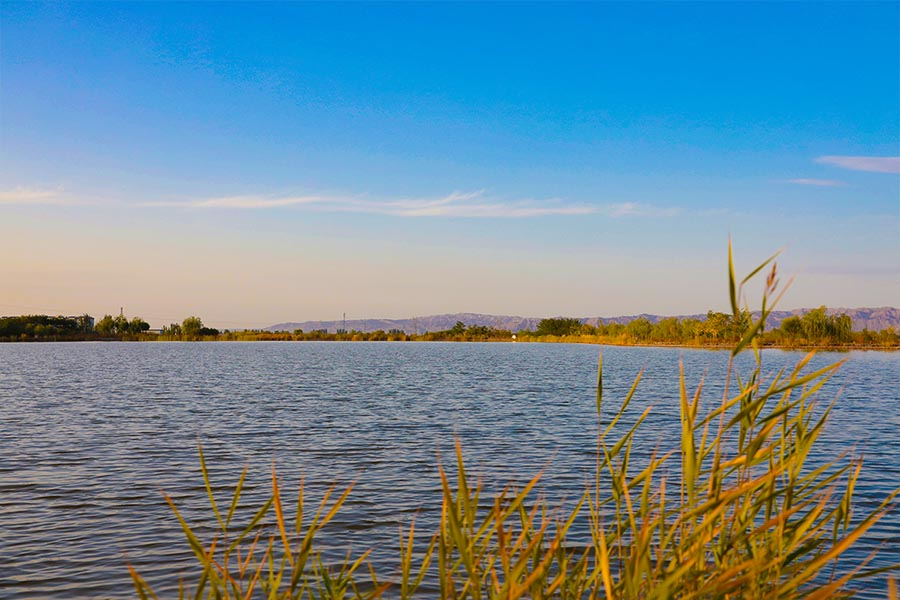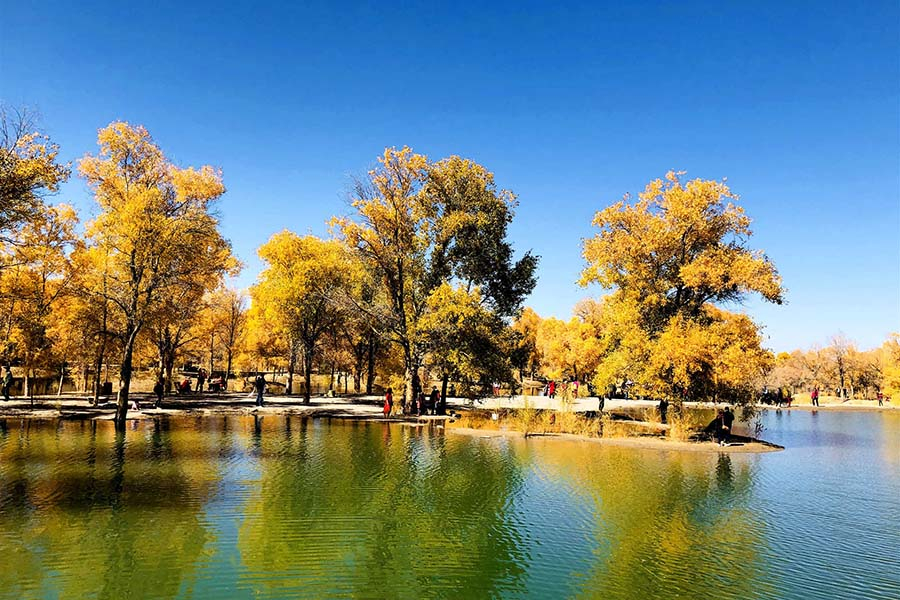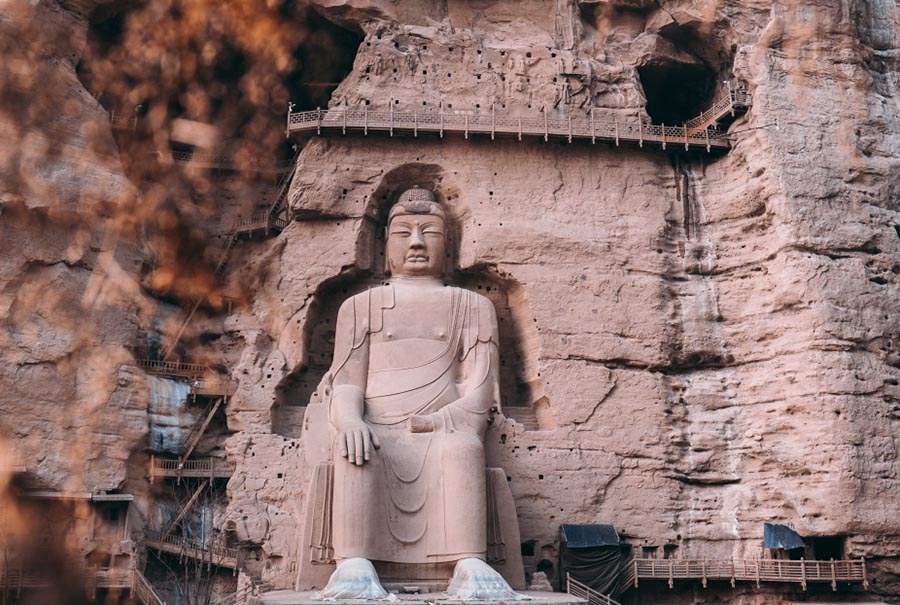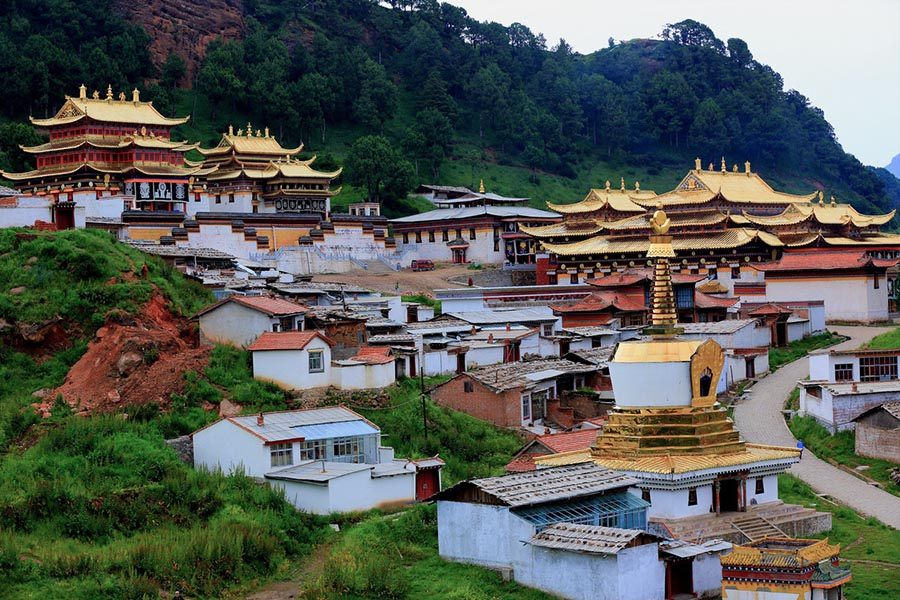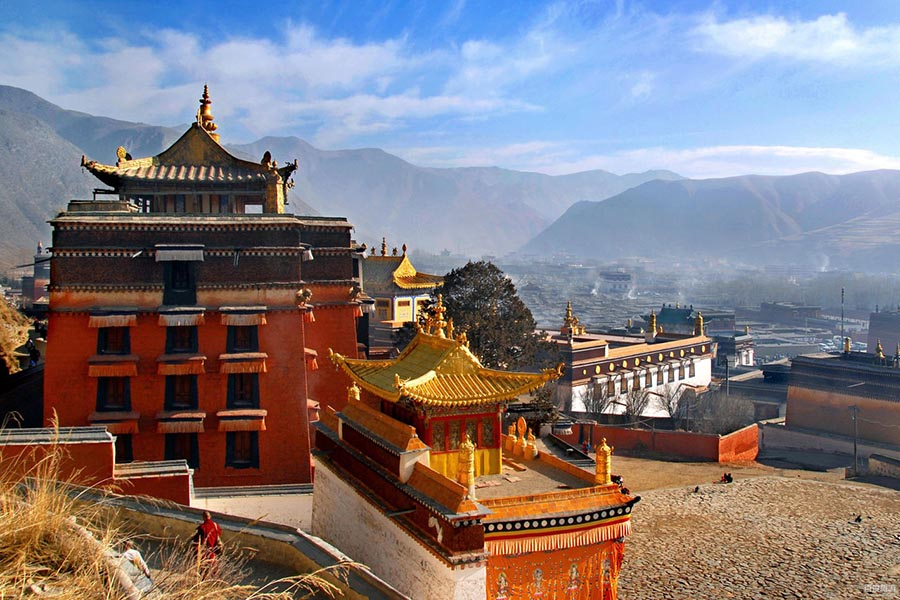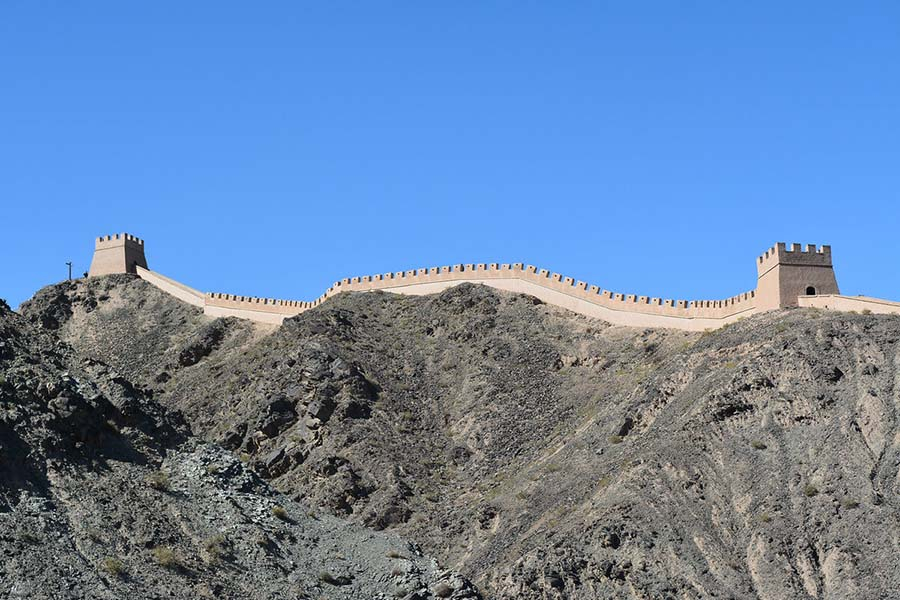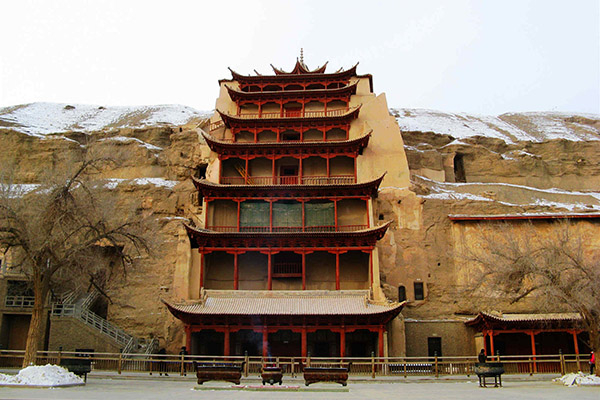Yulin Grottoes
Chinese Name: 榆林窟 (Yu Lin Ku)
Location: Guazhou County, Jiuquan City, Gansu Province
Ticket: CNY40.00
Estimated tour time: 2-4hours
Recommended time to visit: All year round.
Nearby attractions: Jiayuguan Pass, Overhanging Great Wall, Jinta Desert Populus Euphratica Forest, Yadan National Geological Park, etc.
Yulin Grottoes, located 70 kilometers south of Guazhou County, Jiuquan City, Gansu Province, under the jurisdiction of the Dunhuang Academy. Caves excavated in the Yulin River Canyon on both sides of the upright east and west cliffs got its name from the forest of elm trees along the river bank.
There are no words to verify the year Yulin Grottoes was carved. From the cave form and the related inscription inference, it should have been created in the Northern Wei Dynasty(386-534) before Sui and Tang Dynasties. From the style of the fresco and the inscription of visitors, it can be seen that there were excavations, paintings and sculptures in various dynasties after that and large-scale construction was carried out.
There are 43 caves in Yulin Grottoes. The distribution area is 112,850 square meters and the mural area is 4200 square meters. There are 10,856 colored paintings of Buddhism and Taoism and 244 colored sculptures. Among the caves, there are 3 caves in the Tang Dynasty, 8 caves in the Five Dynasties, 13 caves in the Song Dynasty, 4 caves in the Western Xia Dynasty, 4 caves in the Yuan Dynasty and 9 caves in the Qing Dynasty. It is a branch of the art system of Mogao Grottoes that the grottoes have high similarity with Mogao Grottoes in form, expression content and art style.
In 1961, Yulin Grottoes was announced by China State Council as one of the first batch of key cultural relics under national protection.
The Yulin Grottoes were approx first excavated in the Northern Wei Dynasty(386-534). At approx the 10th century, the Cao Yi-jin family had ruled the area for more than a hundred years. The Cao family took advantage of the temporary peace to build grottoes and paint murals to whitewashes the peace. Therefore, more caves were excavated in this period, accounting for half of all the caves in Yulin Grottoes. In the aisle of the caves built by the Cao family are mostly painted with large portraits of their donors. The portraits of the donors in Yulin Grottoes are not only of high artistic value, but also provide reliable data for the study of the history in the area.
In the Western Xia and Yuan Dynasties, 16 caves were built and rebuilt. Due to the influence of the tantric school, there appeared the Water Moon Guanyin, tantric mandala and other rare themes in the previous era.
- HOTEST
- RECOMMEND
